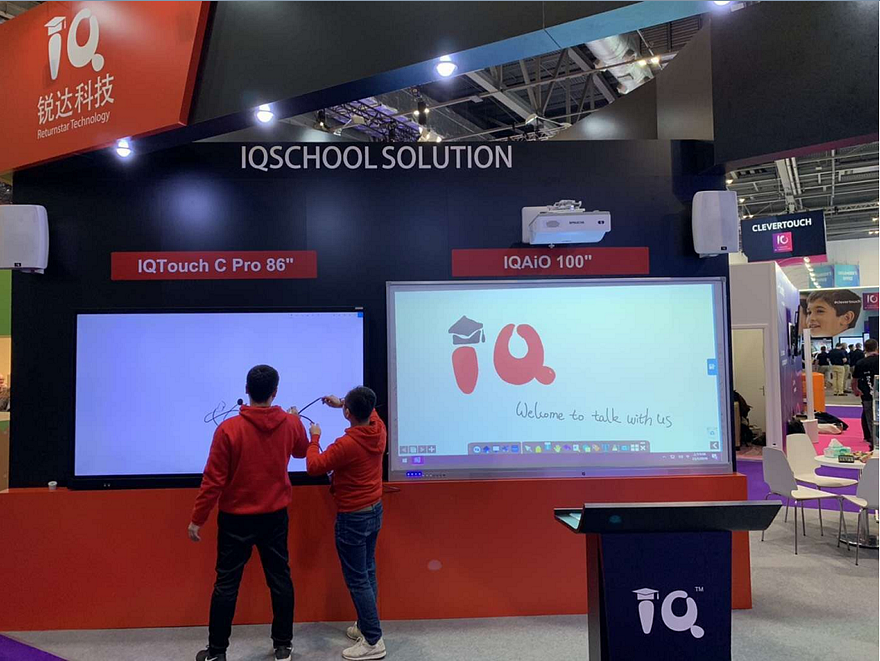Touch screens have emerged as accelerators in the learning and development of students within schools, colleges, and universities. Students of all ages are comfortable with the interface and are natural touch screen users.
Reasons to use IQ interactive touch screen displays in a classroom range from student engagement and performance to teacher and administrator efficiency. And they provide a few unexpected benefits as well. Here are ten of the five advantages of using IQ interactive touch screen display in your school.
First, IQ Interactive touch screen display supports an active learning through collaboration, demonstration and experimentation.
Interactive touch screen displays have an inherent ability to bolster active learning. (Provided teachers use them for more than showing videos and slides). It’s one of the greatest advantages these dynamic devices bring to the classroom. As the name implies, active learning is learning through engaging with content. By becoming involved in the learning process. That it works so well should come as no surprise to seasoned educators. Countless activities facilitate active learning. Many — if not most — are enhanced when instructors and students use interactive touch screen displays.
Second, IQ Interactive touch screen display helps students develop critical readiness skills.
Interactive touch screen displays help students of all ages develop critical life skills. To prepare students for career and college readiness they need to be using tech tools. And they need to be using these classroom tech tools in ways that develop these critical skills. To stay afloat in a competitive world, students need to be able to think critically. They must be able to observe and analyze. To suss out smart solutions to complex dilemmas. They need to be able to answer higher-level questions that require thought and exploration. They need to learn to ask why, what if, and how to think through all sides of an issue. And IQ interactive touch screen displays do all of this and more.
Third, IQ Interactive touch screen display helps students boosting enthusiasm and engagement.
Students in classes that leverage an interactive touch screen display are more engaged. They pay more attention. They’re more positive about learning. Teachers often report that increased attentiveness and engagement are the top benefits of teaching with interactive display technology.
Four, IQ Interactive touch screen display helps deliver effective feedback to students.
Students need feedback to know when they’re on the right track. Decades of research have shown that less instruction plus more feedback creates greater learning. In fact, it doubles how quickly students learn.
Five, IQ Interactive touch screen display enhances classroom management.
Interactive touch screen displays can be a boon to keeping classes running smoothly. For one thing, the more engaged students are, the less likely they are to be disruptive. By making lessons more dynamic, students are inherently more captivated by the content. For another, interactive displays enable the use of can’t-be-missed visual aids. Visual timers like Time Timer keep kids on task. They help kids conceptualize, manage and visualize time when taking tests or taking turns.

评论
发表评论